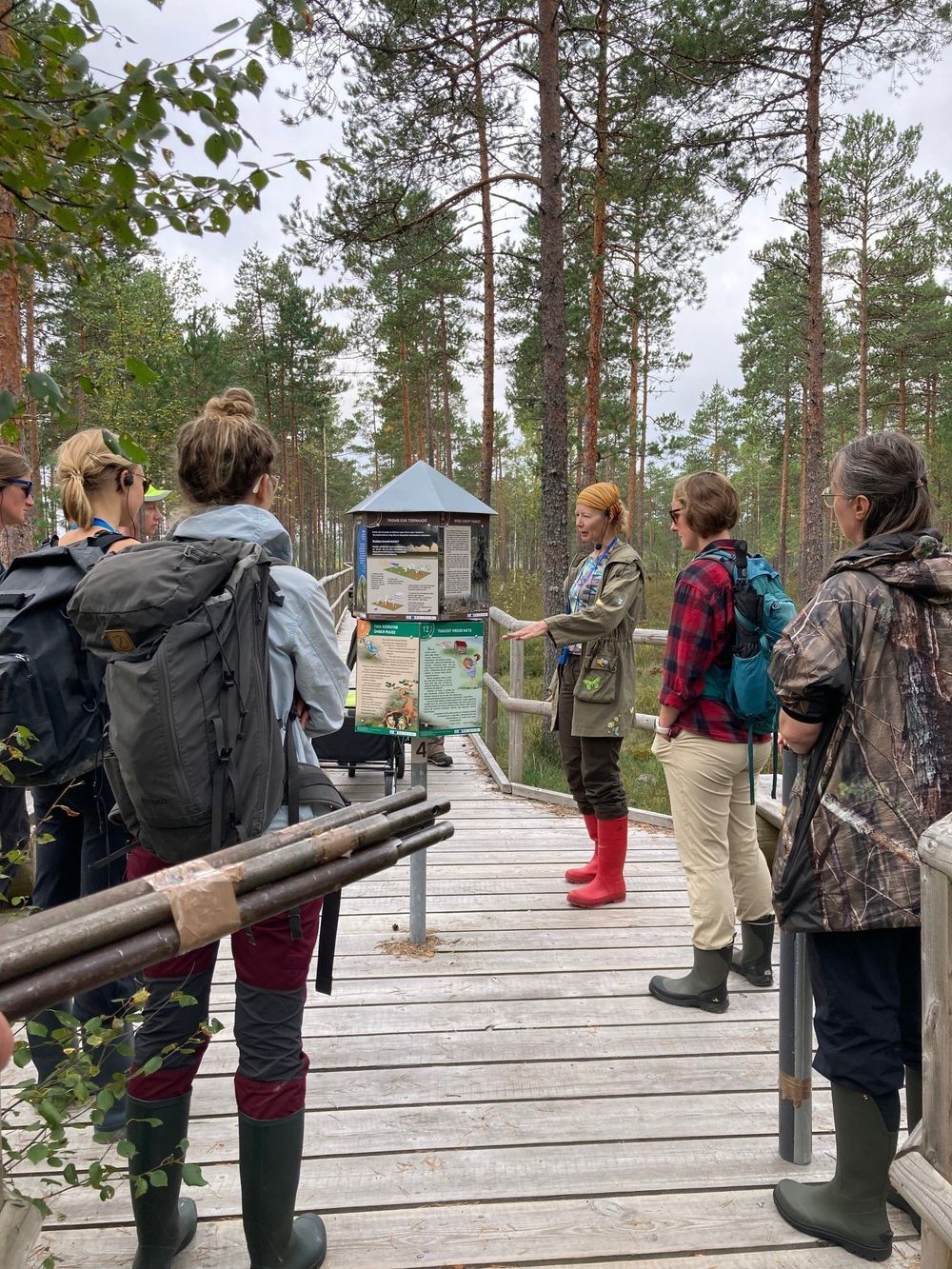In August 2024, an insightful two-day course was held at the scenic Tudu mire in Estonia, organised as part of the WaterLANDS project and the Society for Ecological Restoration Conference 2024 (SERE24).
The immersive programme, designed for restoration practitioners and enthusiasts, focused on the dynamics of transition zones in peatland ecosystems. The course served as a hands-on learning experience which provided on-the-ground training to participants, contributing to building the WaterLANDS project legacy.
The Importance of Transition Zones
Transition zones, such as lagg areas at the edges of bogs, are pivotal for biodiversity and hydrological balance. These areas often serve as ecological hotspots due to the gradients they create in water levels, acidity, and mineral content. However, they are also among the first to degrade, losing their functionality and often becoming unrecognisable in the landscape. Restoring these zones is critical for preserving unique flora and fauna, as well as for maintaining the overall ecological integrity of peatlands.

The course at Tudu mire aimed to address this challenge by equipping participants with the knowledge and tools necessary for effective restoration planning and execution.
The course was structured around several key objectives:
- Reading the Landscape: Understanding the natural gradients and transitions within the bog ecosystem.
- Data Collection and Analysis: Employing state-of-the-art tools like LiDAR, geo-radar, sonar boats, and peat coring to gather critical information.
- Restoration Planning: Learning to make informed choices in restoration, understanding the implications of various techniques, and evaluating potential outcomes.
- Collaborative Learning: Sharing data and insights among multidisciplinary groups to build a comprehensive landscape profile.
The first day was centered around immersive fieldwork. Participants departed from Tartu early in the morning, embarking on a 1.5-hour journey to Tudu mire. The group was guided by experts who explained the ecological gradients and hydrological functions of the bog.

The day's activities included field observations to observe changes in vegetation, water chemistry, and soil conditions, and data collection, where participants explored specific aspects of the ecosystem, such as hydrology, vegetation, and peat stratigraphy. Although it was a wet day, the group also enjoyed a lunch of soup by the fire, and were glad of a sauna in the evening to round out the day!
On day 2, the course shifted focus to data analysis and strategic discussions. Participants worked in new groups to construct detailed landscape profiles, interpret gradients, and assess restoration possibilities.

Participants walked away with:
- Practical skills in ecological assessment and restoration planning.
- A comprehensive understanding of the role and restoration of transition zones in bogs.
- Enhanced collaboration skills and new connections among a diverse group of professionals.

The outcomes of this course are expected to contribute to future restoration projects, serving as a blueprint for integrating data-driven approaches with community engagement.
Photography by Piret Pungas-Kohv and Juul Limpens
Thank you to Agata Klimkowska, Juul Limpens and Marko Kohv for providing the information for this article.


